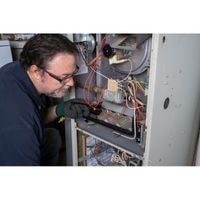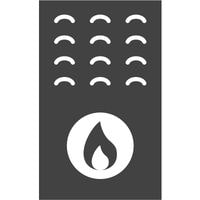Trane furnace troubleshooting. Trane furnaces often turn on randomly or seemingly start to work in the middle of a cycle.
Such instances can leave homeowners feeling confused as they begin to worry if their furnace is malfunctioning.
Fortunately, there may be a cause for this behavior, and maintenance steps can resolve the matter. If troubleshooting does not fix the issue, professional help should be contacted to see what might be going wrong with your furnace.
Trane furnace troubleshooting

While a number of people do experience this, take comfort in knowing that it is not just you who is attempting to figure out how to fix the problem.
There are many potential causes and troubleshooting steps available that can help solve the issue.
If unsuccessful, seek the assistance of a pro who will help figure out what the problem actually is.
The Furnace is not heating
In order to light a gas burner, an igniter becomes very hot and glows bright orange. If the igniter is not replaced or if it cracks, the furnace won’t be able to heat.
If you find that there are cracks on the igniter, try taking the igniter out of your furnace and inspecting it for cracks.
Make sure you replace the cracked one as soon as possible if you notice a crack. However, if there aren’t any cracks on your original igniter, try testing it with a multi-meter to determine if there’s continuity (which means it’s good).
If your new flame sensor doesn’t show its continuity through an electric current, most likely you may need to buy a new flame sensor right away as you can risk having no electric current running through its wires.
The Trane Furnace makes a lot of noise
The blower wheel, located in the furnace, sends air throughout the home to provide heating and cooling. Blower wheels can become loose and rattle around if a set screw becomes loose; this is a simple fix for new furnaces.
If the blower wheel begins to wobble, check for damaged paddles or holes in the wheel itself. Next, inspect the motor bearings with an ohmmeter. If they’re running below their ideal rating, replace them.
Over time, motors may become noisy and overheat prompting them to shut off in these cases simply replace your furnace motor with a new one that has higher ratings than your previous motor.
The furnace blower not working
A furnace is typically made up of a blower, a burn chamber, a heat exchanger, and a gas valve. Make sure that the power supply is functioning properly first.
The blower is driven by an electric motor and in order to check if the motor works we can push down on it or listen for a humming sound.
If there are no vibrations or sounds coming from it, it is likely that the motor has burned out and requires replacement.
If all seems well with the furnace’s fans, yet nothing happens this means that either we have to check its connections or its control board which regulates all of its functions must be faulty.
The furnace blower runs constantly
The control measures the voltage of each individual component in the furnace.
If a coil control is turned on and the blower relay windings are energized, it can trigger a continuous power supply to the blower fan, causing it to run continuously.
If the control board has failed, replace it. The wall thermostat regulates the electric current passed through to different units located throughout your house. It also controls how long that current stays on.
A stuck pressure switch can trigger a continuous electric charge which leads to overheating by continuously going on and off;
test if this is faulty by testing whether or not there is continuity with a multi-meter while pushing down on its pressure button under normal circumstances.
If there is no continuity when pushing down then that means there is an issue within the pressure switch and will need replacing as soon as possible.
Related Guides

